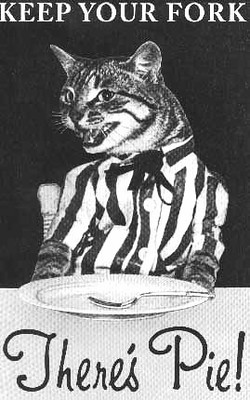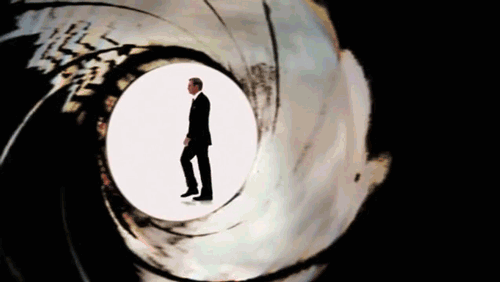
Let’s just get right to it: the Zenith El Primero A384 Revival is, in my opinion, the best new-for-2019 chronograph you can actually buy.

You may have noticed my not-so-subtle qualifier. That’s because, arguably, the A386 is the best new-for-2019 chronograph, but although you probably want one, you are unlikely to be able to get one, due to the fact that they made so few and they are, owing to the fact that they’re either gold or in a box set, quite expensive. But that doesn’t matter, because you can get the A384.

And that’s because, among other things, the A384 is not simply an El Primero-which would certainly be enough on its own to warrant joining a collection-it’s the El Primero, the very first watch to ever receive this legendary movement, all the way back in 1969.

The dial of the A384 Revival is, near as makes no difference, a perfect reproduction of the original. Note the lack of fake aged lume, for instance, which separates this from something that’s merely vintage-inspired. This is virtually identical to the watch as it would look if you were buying it in 1969, not a romanticized interpretation of what it would look like. Despite the wild case, or perhaps because of it, the dial is somewhat more subdued than its more famous A386 counterpart, lacking its legendary tri-color dial. Instead, we have a simple black subdials against a lacquered white dial.

The main hands are a callback to the distant past of Zenith. For example, the seconds hand lacks the star-counterbalance found in most Zeniths these days, and instead has a luminous rectangular tip. But it’s clear from the design of the watch that telling the time was of secondary importance, thanks to that bright red chronograph seconds hand that draws your attention.

White subdial hands are far more legible than the minute and hour hands against their black backdrops, further demonstrating that the first El Primeros prioritized chronograph legibility over all else.

The subdials have a fine guilloche finish beneath them, but you’ll only be able to appreciate it on the 6:00 subdial. The other two have finishes so fine that they cannot be seen with the unaided eye, or at least, my aging unaided eyes. In practice, they give the subdials a slight sunburst effect.

As it would have interfered with the subdial were it at 3:00, the date has been located out of the way, just like the original. It has no applied date frame, but rather a gentle step down into the date window, which looks quite nice. Thankfully, the date changeover is instant, a simple, oft-overlooked feature that I always appreciate.

The lume on the A384 is surprisingly good, certainly enough to use in a movie theater or to see next to your bed at night. Oddly, the A384 easily outperforms the far larger and more expensive Defy Inventor I reviewed parallel to it in this category.

Next we must discuss this wonderful case. Although the A384 kicked off the El Primero legend, it never got the credit it deserved compared to its more conventionally-cased A386 brother, and that’s a shame. While I love the A386’s case as well, the A384’s funky design is so much more unique, and given that the 1970s were coming up, somehow more forward-thinking. Like the JLC Reverso, I think this is a design that many won’t appreciate until they see it on their own wrist.

This is where most brands screw it up. They reach back to an important historical milestone for the company, and then they try to modernize it, or worse, to make it artificially old. The watches get bigger and thicker, they get fake aged lume, they make various stylistic changes necessary because the subdials are in different places owing to a new movement. But not the A384 Revival.

Take the thickness, for instance. Here is where I should copy and paste my standard complaint about how the chronograph is too thick and it’d be nice if they could work on making it smaller. But I don’t have to today, because it’s 12.6mm thick, despite its enormous box crystal. It could easily drop another millimeter if it used something more conventional, but it’s also worth remembering that this is a full-featured automatic chronograph with a date. I found myself praising the also-superb Omega Apollo 8 last week for its 13.8mm thickness, and that was a hand wound with no date. This is what we’re asking for. Zenith is a brand paying attention.

Likewise, had most other manufacturers attempted this watch, it would have gone from its original 37mm size to 42mm or even 44mm. But not the A384 Revival. Zenith had the brilliant idea to not mess with something that was already done correctly. They have succeeded where most others have failed merely by doing nothing. Is 37mm too small for larger wrists? Probably, but given the vast numbers of large and XL chronographs on the market, it’s so nice to see something geared towards those with small and medium wrists, an increasingly rare circumstance.

One of the few things they did change was the crown, if only to update the logo. As you would suspect, this does not screw down, and typical to the wonderful and weird world of El Primero movements, pulling it will not cause the movement to hack. Far weirder is the fact that, on an El Primero movement such as this, the first crown position is actually for setting the time, while the second is for changing the date. The El Primero may be famous for its place in history and its performance, but it’s also a charmingly eccentric movement too.

It should be no surprise that the original El Primero features an El Primero movement, the first and still one of the very best automatic chronographs. It’s astonishing how ahead of its time the El Primero was. Most manufacturers, looking to announce the first automatic chronograph, would have focused only on that feature to save time and beat the competition to an arbitrary milestone. Zenith, however, was more focused on making the best chronograph in the world. The program was so complex that it began in 1962 with an expected release date of 1965. In reality, it took over twice as long to release the watch, which came out in 1969. But doing things right is preferable to doing them fast. Zenith no doubt could have rushed out a simple automatic chronograph by ’65, and they would have a nice little historical footnote instead of the legend in this watch. Also worth noting is the biggest change from the original A384, namely that the new one has a sapphire back so you can see the movement, a change I entirely welcome.

The El Primero has had enough written about it that you could fill a library at this point, so I won’t go into too much detail, but suffice it to say that this movement set the bar so high in ’69 that it’s still extremely competitive 50 years later. I will say, without reservation, that this is singularly my favorite chronograph movement ever made. I’ve always been a fan of high frequency movements, and the El Primero is one of very few mass produced high beats, alongside one of my other favorite movements, the GS 9S85. Another aspect of the El Primero I like is that it’s an integrated chronograph, as opposed to modular, and this goes to that desire to do things correctly from the beginning. In the race to announce the first automatic chronograph, Zenith faced off against its chief rival, a consortium consisting of a number of companies which included, among several others, Heuer and Breitling.

Together, Zenith’s opponents developed the Chronomatic, a modular chronograph, which basically means they developed a chronograph mechanism that could be attached to an existing 3-hand movement, an approach to movement design that’s still quite popular today. The big advantages of modular movements, whether chronographs or otherwise, is that they can be (relatively) quickly and cheaply developed, piggybacking off of the R&D that was invested into an existing movement. Speed, obviously, was of the upmost importance in the race for the first automatic chronograph, but it does come with some compromises, most notably thickness. The Chronomatic, despite using a micro rotor instead of the El Primero’s full-sized automatic winding system, was still unable to compete in terms of thickness.

With the advent of new Zenith movements, like the El Primero 21 and the revolutionary Zenith Oscillator found in the Lab and Inventor, it’s interesting to go back to 1969 and think about how the original El Primero had pretty much the same effect. Zenith had not only been the first Swiss company to announce an automatic chronograph, but they had created a gorgeous, 36,000 BPH, integrated movement. Simultaneously, the three watches that housed this new movement were eye catching and avant garde in their own right, from the funky A384 here to the iconic tri-color dial in the A386. The original El Primeros are legendary watches that earned their reputations both by style and by substance, just like this new one.

But even if we totally disregard the pedigree, I still think the A384 Revival (03.A384.400/21.C815) is the best new-for-2019 chronograph you can buy. It’s reasonably thin, reasonably small, it looks amazing, it has one of the best movements on the market and it’s not a limited edition so you can actually get one. This is, without any reservation, the chronograph I’d buy from 2019.

It’s priced at $7,600, an increase of a thousand dollars over similar El Primeros on leather like the 03.2040.400/69.C494, but in exchange you get something very special, a truly restrained reproduction of one of the most important watches ever made. As the El Primero lineup begins to dwindle in favor of increased attention on Defy, it’s good to know there are still some brilliant new non-LE additions to the collection.
If you’d like to see the product page for the A384, please click here.







